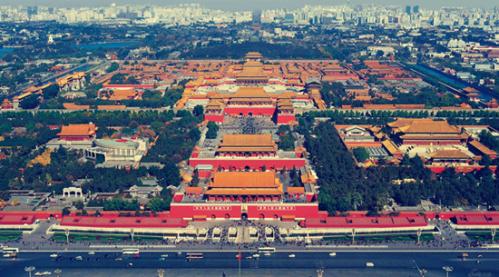By Tom McGregor, CCTV.com Panview commentator and editor
The Palace Museum, known as Forbidden City, is located in the heart of Beijing, which has captured global attention for its long and rich heritage. Tens of millions of visitors have trekked to the museum each year to learn more about China's ancient imperial past.

Nevertheless, huge crowds, especially during peak times, have sparked growing frustrations for museum officials and visitors.
Confronting challenges, museum staff have agreed to work with hi-tech companies to develop a digital museum that allows users to view its 1+ million items of rare relics and ancient cultural artifacts with APPS that provide an in-depth understanding on Chinese emperors' lifestyles under dynastic rule.
1st of its kind
After three years of efforts, the Palace Museum announced on August 1, 2017 that its entire collection has been stored into a digital community with the launching of nine APPs.
The museum's curator Shan Jixiang played a leading role to create a digital Forbidden City that integrates an intelligent museum with stronger security and communications systems.
By utilizing new advanced technologies and equipment, the smart museum taps into Big Data, Virtual Reality, 3D (three-dimensional) imagery and video games to provide valuable information for the public in an entertaining format.
For example, Xinhua cites the Night Revels of Han Xizai APP, where users on smartphones can click to uncover insights of the painting that depicts luxurious court life during the 5 Dynasty period - (906-960AD).
The painting comes to life on the APP as viewers can witness ancient performance art that had been composed of music and dance from the era.
Fun & cool APPs
There's other trend-setting APPs as well. The Qing Emperor's Wardrobe APP helps the public distinguish the differences between real imperial dress of the Qing Dynasty (1644-1911AD) and what many Chinese have seen actors wearing on popular TV dramas that featured scenes from that part of history.
Users obtain explanations of Qing Dynasty court functions and ceremonies that were celebrated along with descriptions of the attire worn by imperial families, court officials, and ladies-in-waiting.
Another APP offers a digital map and information of the Forbidden City's 1,200 buildings and 9,371 rooms. Actually, the museum has over 1 million artifacts and artworks, but never more than 1 percent of items are set for display at a given time, while just a third of the buildings are open to the public.
VR and 3D tours
APP users can receive background information of each piece under the possession of the Palace Museum. Meanwhile visitors are encouraged to visit the physical site where they can go straight to the Hall of Supreme Harmony Sanxitang (Room of Three Rare Treasures).
Visitors are provided with VR (virtual reality) devices and given a VR tour. They can look at high-resolution images and listen to audio narration.
For added fun, The Hall of Supreme Harmony has placed 3D images on display that make the relics and artwork come to life. The computer giant IBM in 2008 had agreed to invest in a US$3million joint project with the Palace Museum to develop the project.
Japan-based Toppan Printing had also signed on to build a Cultural Assets Digitalization Research Center of the Forbidden City, which was launched in Oct. 2014 with a RMB37 million investment.
Viewing the benefits
"For many people, the Palace Museum experience can be enhanced as they use our APPs," Yu Zhuang, head of New Media at the Palace Museum, told China Daily. "The Internet has provided us with more channels to expand museum influences to more corners in people's everyday lives."
Yu highlighted the museum's calender APP, '365 Days of Masterpieces.' The APP features 1 piece for each day of the year. The user can click to receive cultural background on it.
Google Arts & Culture has agreed to place 100 artifacts from the museum to go online. Google only features famous artworks from around the world.
Most of all, digital users can capture a better understanding of what life was really like for Chinese emperors and the courts. A virtual tour named, ‘Beyond Space & Time’ had been set in a computer game format.
Visiting from afar
In 2008, the then-director of the Palace Museum information department, Hu Chui, announced the Forbidden City would go digital during an interview with PC World magazine.
“The project has several purposes, mainly to allow people who cannot visit Beijing to experience the Forbidden City and for those who have visited the physical premises to learn more about it.”
The staff were proud of the Palace Museum's rich cultural heritage and sought to bring greater attention to the world.
Many APPs encourage users to share their experiences with others while asking them to submit articles and photos that delve deeper into ancient Chinese history.
A museum is more than just a museum and when the Forbidden City had gone digital, it opened its doors to the world.